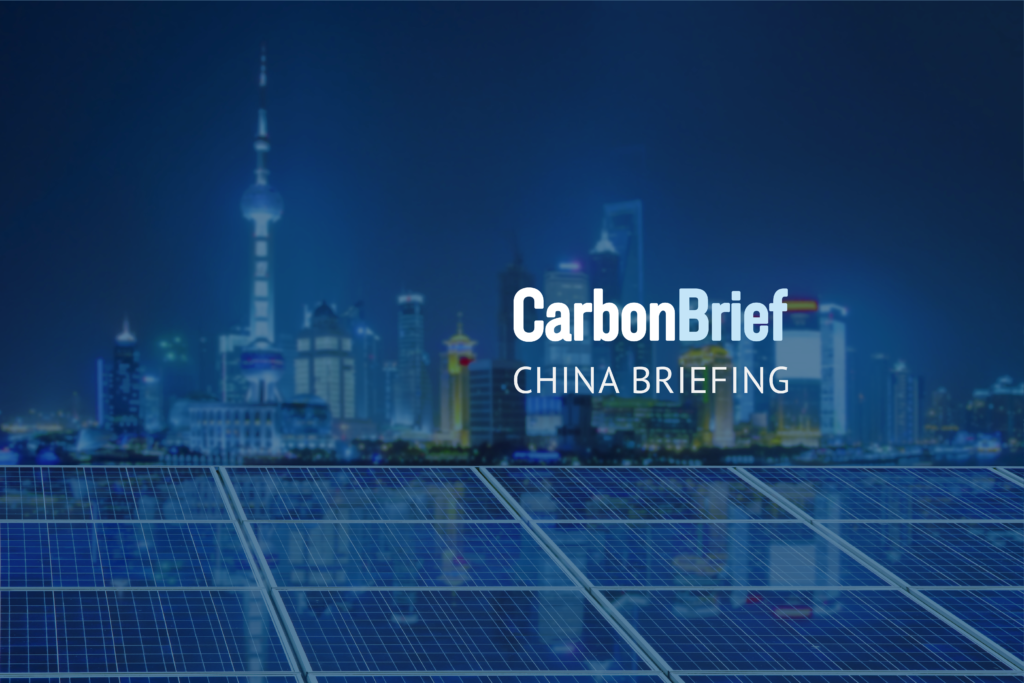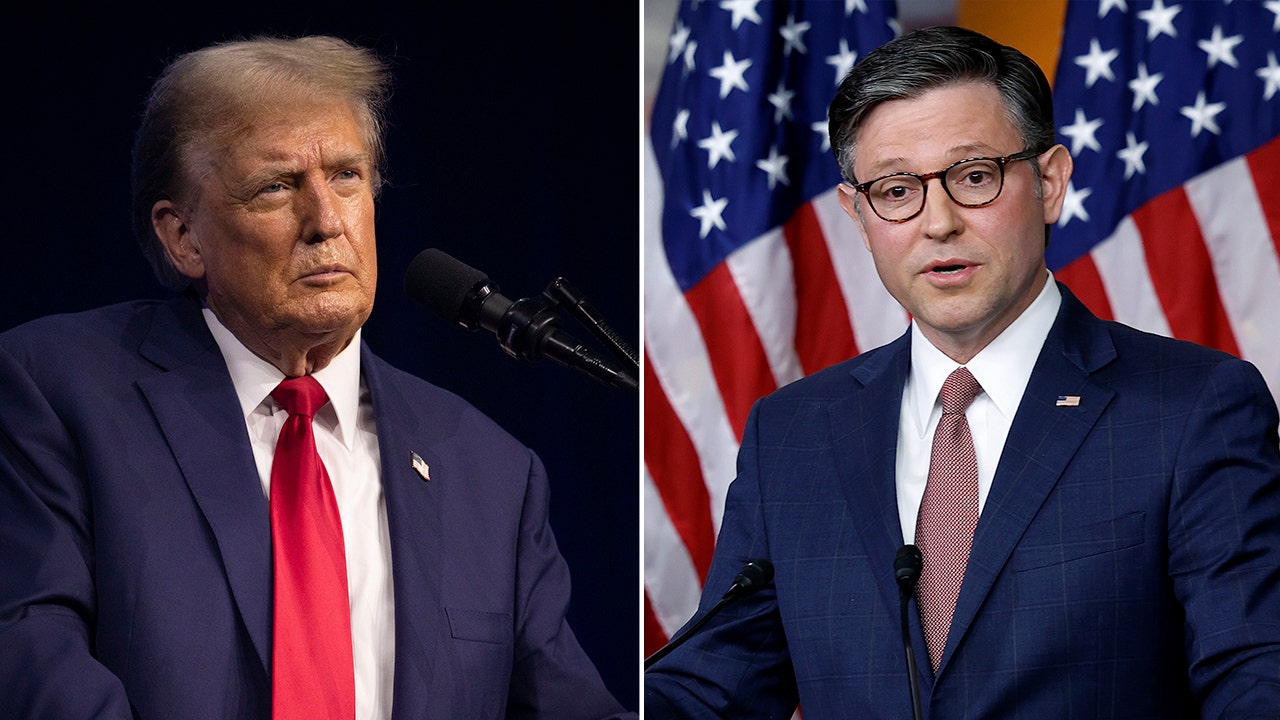Welcome to Carbon Brief’s China Briefing.
China Briefing handpicks and explains the most important climate and energy stories from China over the past fortnight. Subscribe for free here.
China pushes back on US and EU ‘overcapacity’ complaints
‘FAIR’ COMPETITION: German chancellor Olaf Scholz and US treasury secretary Janet Yellen have visited China in the past fortnight, amid concerns regarding China’s dominance in clean-technology supply chains. Scholz commented in Shanghai that “competition must be fair” and, “in other words, that there is no dumping, that there is no overproduction, that copyrights are not infringed”, Reuters reported. Similarly, in response to a question on whether the US would place tariffs on Chinese exports, Yellen told CNBC that she “wouldn’t rule out anything at this point. We need to keep everything on the table.” Mary Lovely, senior fellow at the US-based Peterson Institute thinktank, told the Financial Times that Yellen’s visit to China seemed “like the best indicator yet that new tariffs on China will be coming, no matter who wins” the upcoming US presidential election.
WIND INVESTIGATION: Chinese premier Li Qiang told Yellen that China’s clean-technology industries “make an important contribution” to the global energy transition, the Hong Kong-based South China Morning Post said. Commerce minister Wang Wentao echoed this during a visit to Europe, saying that he does not understand “how the European Commission carries the banner of sustainable and green development and then takes protectionist actions”, Reuters reported. This comes as the EU opened another subsidy investigation into Chinese wind turbine companies, which will focus on windfarms in Spain, Greece, France, Romania and Bulgaria, the Financial Times said. An analysis by Reuters noted that “the supply of Chinese wind turbines for EU projects is relatively small and the European market is still dominated by domestic players”.
REACTION FROM CHINA: State news agency Xinhua reports that foreign ministry spokesperson Lin Jian said at a press conference that “the notion that China’s overcapacity harms the global market is a complete fallacy”, adding “China’s leading edge in new energy is gained through strong performance and full-on market competition, not government subsidies” and “we hope relevant countries will keep an open mind, embrace fair competition”. State-run newspaper Global Times published an opinion piece by Huo Jianguo, vice chairman of the China Society for World Trade Organization Studies, saying the “rhetoric lacks logic, aimed at stymieing China’s development”. The state-run China Daily quoted Zhang Xiang, researcher at North China University of Technology, saying that the problem has been “exaggerated” and that China “should not be blamed for offering cost-effective new energy technologies”.
ANALYST REACTIONS: Nicholas Lardy, fellow at the Peterson Institute, told Reuters that he was “sceptical” about the “overcapacity” concerns, adding “if you think about it, it means every country should only produce what it consume[s] itself. That means no trade.” On Twitter, Chucheng Feng, partner at Beijing-based Hutong Research, said that China sees overcapacity arguments “as an attempt to undermine China’s ambition to be a global leader in the green transition”, meaning that they carry “more significant…implications than any previous such calls”.
China to build a ‘green financial’ system and more support for goods trade-in
‘GREEN FINANCE’: China’s central bank and six other ministries jointly issued “guiding opinions” to build a “world-leading” financial support system within five years, promoting “green and low-carbon developments”, reported Beijing News. The document calls for establishing unified standards, including “carbon accounting” methods.
EXPERT VIEWS: Luyue Tan, senior carbon analyst at LSEG, told Carbon Brief that the policy is a delayed update aimed at redesigning China’s financial policies to facilitate its “dual carbon goals”. Tan added: “This guideline connects two previously separate markets in China – green finance and carbon market – which are led by different government entities and bodies with varied focus.” The integration of the two markets will also contribute to new developments in the field, Guoqiang Qian, general manager of Chinese thinktank Sinocarbon, told Carbon Brief. He said: “The biggest problem in the Chinese carbon market is the lack of standards. The financial market could provide examples.”
TRADE-IN STANDARDS: The Chinese government announced a goal on 10 April to raise 294 environmental standards by 2025, including standards on goods trade-in and recycling, reported Xinhua. The announcement came after the release of an action plan to “promote the large-scale renewal of equipment and the trading-in of consumer goods” last month. (Read more in China Briefing from 21 March). China Daily quoted Zhao Chenxin, deputy director of the National Development and Reform Commission, saying China “will leverage central investment and central fiscal funds to offer financial support for [the policy]”. Zhao was also quoted by state-run newspaper People’s Daily where he said the promotion of equipment renewals and trade-in is the overarching policy in a new “1+N” policy grouping.
MORE TO COME: State news agency Xinhua reported that the premier Li Qiang approved the “energy saving and carbon reduction action plan for 2024-2025”, the details of which have yet to be publicly disclosed. The news agency said the plan recommends combining energy conservation and carbon reduction in key areas and also emphasises the promotion of equipment renewal and consumer goods trade-ins.
Mass new coal constructed in 2023 and 300m tonnes to be reserved
NEW COAL: China accounted for 95% of the world’s newly started coal power construction activity in 2023, according to Global Energy Monitor (GEM). Construction began on 70 gigawatts (GW) of new capacity in China, up four-fold since 2019, compared with less than 4GW of new coal power construction starting in the rest of the world – the lowest since 2014, the report said. In addition, the construction of coal-fired power plants globally – excluding China – declined for the second year in a row. However, coal power plant retirements were also at the lowest level since 2011, the report added. Carbon Brief published an in-depth summary of the report.
RESERVE COAL: China announced plans to establish a coal production reserve system by 2027 to guarantee “supplies of [coal] to power plants” and “stabilise thermal coal prices”, according to a joint document released by the National Development and Reform Commission (NDRC) and the National Energy Administration (NEA), Chinese economic outlet Yicai reported. Science and Technology Daily said that the document aims to achieve annual production of 300m tonnes of coal by 2030 for China’s reserves and to facilitate the role of coal as “a bottom-line guarantee in energy supply”. Industry outlet BJX News said that coal reserve production capacity could be used for “extreme” circumstances, such as “drastic uncertainties in the international energy market, extreme weather or sudden changes in the supply and demand situation”.
Interview: China Photovoltaic Industry Association on EU trade
Earlier this month, the European Commission launched investigations into two Chinese solar firms, saying “there are sufficient indications that both have been granted foreign subsidies that distort the [EU’s] internal market”.
Carbon Brief interviews Liu Yiyang, deputy secretary-general and spokesperson of China Photovoltaic Industry Association (CPIA), and gathers his views on the future for Chinese solar in Europe. The interview is edited for clarity and length.
CB: How important is the European market for Chinese solar firms?
Liu Yiyang: Europe is a very important solar market. According to Politico, more than 80% (about 45GW) of the newly added solar installations in Europe last year came from China. In addition, over the past year, Europe’s mainstream solar panel module prices fell from €0.3 per watt in March 2023 to €0.14/watt in April 2024. In terms of power prices, it can be said that Chinese modules have significantly reduced the cost of solar systems as well as the overall energy cost in Europe.
The European solar market and China’s solar manufacturing industry are complementary and mutually beneficial. Under the backdrop of the green energy transition, there is great potential for more solar cooperation between China and Europe.
CB: The European Commission says state subsidies may have given the Chinese solar firms an “unfair advantage” over their competitors. Do you agree? What are your thoughts on Chinese subsidies in the solar sector?
LY: In China, the central government provides no subsidies for the solar market or the solar manufacturing sector. There is a small amount of research and development funding with a modest purpose to support pilot testing and industrialisation, and technological advancement of the global solar industry. This is commonly practised across the world.
For example, in 2017, the US Department of Energy provided $46.2m in funding for 48 solar projects under its SunShot program. In August 2022, the US passed the Inflation Reduction Act (IRA) to invest more than $300bn to support renewable energy. Since then, many companies suspended their investments in Europe and instead relocated their production plans to the US. On 8 January 2024, the EU approved Germany a state aid of €902m to support a Swedish company Northvolt to establish an EV battery plant in Germany. The EU also uses subsidies to enhance its global product competitiveness.
Reuters reported that EU countries are concerned that their companies will lose out because of IRA tax credits, arguing that this violates the World Trade Organization’s principle of non-discrimination. The European Parliament explicitly stated that the IRA has been criticised for its “Buy American” style.
In summary, it is not the state subsidies in China that have given enterprises an unfair competitive edge, but rather the US through the IRA and its implementation details causes a world race for industrial policy, in breach of WTO rules.
CB: How damaging do you think the investigations will be for trade between China and the EU?
LY: We suggest that the investigation should be based on the principles of objectivity, fairness and must be supported by sufficient evidence. Groundless speculation can only harm the Sino-European trade relations and may even expand to non-solar areas.
Ungrounded countervailing investigation will also slow down the pace of Europe’s future green energy transition and even affect the realisation of the net-zero emissions target of the global energy industries.
CB: The idea of “de-risking” supply chains and “decoupling” from China has been circulating in the EU for a while now. What would it mean for global solar expansion – and efforts to tackle climate change – if decoupling succeeds?
LY: There has been plenty of talk of “de-risking” or “decoupling”. The argument is highly dubious and unclear where the so-called risks come from. China has never taken any actions, nor have we verbally sought to prevent European customers from buying Chinese solar products. The so-called risk does not make sense.
Energy, with solar as one source, is fundamental to all manufacturers. The lower the cost of energy, the greater the competitive advantage of the European manufacturing industry. China’s solar products have made a great contribution to reducing European energy costs over the past decades and we are willing to provide more help.
If “decoupling” or “derisking” is forcibly induced by external agitation, disregarding objective economic laws, the ones who stand to suffer will not only be Chinese businesses, but also European citizens and the broader European manufacturing sector. Europe has suffered from rising energy prices and inadequate energy supply for a long time. Similarly, if China and Europe cannot maintain close cooperation in the solar sector, both will face tremendous challenges in addressing climate change.
CB: In general, what do you think the future will be for the Chinese solar industry in the EU?
LY: We believe that, without unnecessary interference, the prospects for Sino-European cooperation in the solar industry are enormous. Europe can leverage its advantages in capital and technology, and China can utilise its large-scale manufacturing and industrialisation, continuously developing more efficient and more cost-effective solar products.
At the same time, as Europe has considerable experience in constructing large-scale grid with high renewable energy penetration, the two sides can cooperate on innovative power systems and virtual power plants. Sino-European cooperation in the solar industry is not only expected to benefit our two regions, but the whole world.
CLIMATE AND FOOD PRICE: Research centre the Manchester China InstItute released a video on YouTube of Prof Tim Brook from British Columbia University, discussing how climate change affected food prices in China in the pre-industrial age.
DECARBONISATION UPDATES: David Roberts on his Volts Substack invited Lauri Myllyvirta, lead analyst from Centre for Research on Energy and Clean Air (and frequent Carbon Brief contributor), to talk about China’s recent efforts on decarbonisation.
CHINESE EV VS TESLA: The Daily podcast of the New York Times spoke to investigative reporter Mara Hvistendahl about how Elon Musk may have given Chinese EV firms the tools to “beat Tesla at its own game”.
‘STEVE JOBS’ OF CHINA: The Financial Times profiled Lei Jun, founder of Xiaomi, “an Apple copycat”. Xiaomi recently joined the EV market and launched its SU7 model, which closely resembles the Porsche Taycan, the newspaper said.
Chinese loans to African nations have declined steadily from a peak of $23bn in 2016, according to a report by the Boston University Global Development Policy Center and the African Economic Research Consortium. Around one-third of all Chinese loans between 2000 and 2022 – some $134bn – were in the energy sector, the report adds, with $26bn during this period going to fossil fuel projects. However, no new fossil fuel loans have been issued since 2019.
Carbon emissions trading policy and climate injustice: A study on economic distributional impacts
Energy
A new study analysed the impact of China’s emissions trading scheme (ETS) on the distribution of “benefits and responsibilities” among the local economies of different Chinese cities. It concluded that the implementation of the ETS improves GDP, on average, but can also harm innovation and foreign investments in cities. In addition, the researchers noted that the policy has the potential to “enlarge the gap between developed and developing areas”.
Forest carbon storage and sink estimates under different management scenarios in China from 2020 to 2100
Science of the Total Environment
A new study employed three tree-growth models – the Richard, Hossfeld and Korf models – to evaluate the carbon sink potential of existing forests and afforestation in China from 2020 to 2100. The study estimated that in 2020, the carbon stored in China’s forests reached 7.62bn tonnes of carbon, equivalent to 28bn tonnes of carbon dioxide. It further suggests that by 2100, 19.59bn tonnes of carbon could be stored.
China Briefing is compiled by Wanyuan Song and Anika Patel. It is edited by Wanyuan Song and Dr Simon Evans. Please send tips and feedback to [email protected]
Sharelines from this story


















Discussion about this post